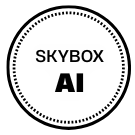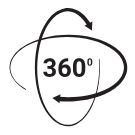DEVELOPER

EXPERIENCE LINK

Open Tap Here

OVERVIEW
VR Piano lets users experience music like never before. Choose your perfect 360° skybox to match your mood and melody, and play the piano wherever your heart desires. Whether you’re a creator, educator, or tech innovator, VR Piano redefines how you practice, perform, and prototype musical experiences in VR. Compose your world with VR Piano!
PLAYING MODES
Free Play
Auto Play
Guided Practice
TECK STACK
Key Technologies | WebXR with react-three/xr |
|---|---|
Front-end |
|
Back-end | (none) |
Supporting Tools |
|
Interaction Methods | Hands tracking |
Technical Achievements |
|
Add-Ons & Custom Designs |
|
Use Cases |
|
Prototype-to-Delivery Time Estimate |
|

BACKSTORY
Q1: How much work is required to turn this from a prototype into a deliverable?
A1:
It will require additional device-specific testing. For example, I’ve already implemented it on a Quest Pro-but if we want to support Apple Vision Pro or other headsets, we’ll need to test and adjust accordingly.
Q2: What technical problem are you trying to explore?
A2:
Verifying whether spatial audio and piano input can be stably combined in a VR setting.
Testing realistic hand-tracking accuracy during simultaneous musical interaction.
Q3: Is there anything that could be improved given more development time?
A3:
Performance is acceptable, but there is definitely room for improvement. The main area of improvement is fingertip precision when playing at a faster tempo.
Q4: What unexpected issues did you run into, and how did you work around them?
A4:
Domain knowledge gap. I’ve been playing piano for many years—from age 4 to 20 in France—so I assumed I could effortlessly build piano tools and curate suitable compositions. In reality, crafting accurate piano utilities and editing musical scores in a spreadsheet require very different skill sets. To bridge that gap, I experimented with AI-powered spreadsheet editors to automate parts of the process. While they helped speed up tasks, they weren’t precise enough, so I still had to manually refine many entries.
Q5: What do you think about the potential of this prototype?
A5:
VR is a great learning environment. The initial goal of this prototype is to let users learn while playing.
This prototype could also serve as the foundation for rhythm-based games that leverage Web technologies-something both easy to develop and fun for users.
Build more rhythm games centered on simpler instruments (ex. drums) to streamline development and reduce technical complexity.
Designed 3D visual effects or particles appear during playback, providing a fun and immersive music exploration experience.
Deliver a more engaging, longer-lasting user experience while leveraging many of the same WebXR and AI-backed audio-conversion workflows.
Q6: Does the prototype support online modes such as multiplayer or virtual events?
A6:
The VR Piano prototype is currently built for individual use only. Features like multiplayer performances or virtual lessons are not supported.
Enabling online modes would involve framework evaluation, infrastructure planning, architectural refactoring, development & testing. Careful consideration of bandwidth, latency, and server infrastructure will be essential to ensure a smooth multi-user VR experience.
Please be sure to account for additional development time in your project timeline if you’re interested in adding online functionality.

DEMO VIDEO
.png)
Designium Inc.
VR Piano

Contact us
Shaping Tomorrow, Today
At Designium, we are more than just AR developers — we are storytellers, innovators, and pioneers of the digital frontier. Join us on a journey where creativity knows no bounds and technology is limited only by imagination. Together, let's create the future of augmented reality. Reach out to our developers today to get started.















